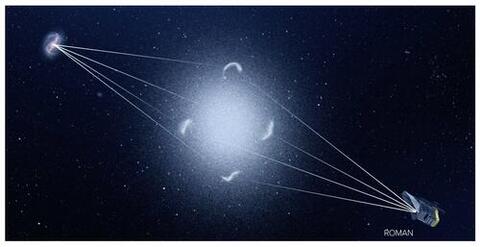Study: Roman Telescope may be transformative in better defining dark matter

In a new study, Yale’s Priyamvada Natarajan and other astronomers predict the new Roman telescope will elevate the ability to study dark matter.
Like going to the eye doctor for a better pair of specs, astrophysicists are getting some upgraded lenses — both humanmade and natural — for a closer look at dark matter.
An international team of researchers, including Yale’s Priyamvada Natarajan, say next year’s launch of NASA’s Nancy Grace Roman Space Telescope will transform their ability to find what are known as gravitational lenses — pairs of galaxies that can act as cosmic magnifying glasses to peer deeper into the universe.
Dark matter, which is thought to constitute the majority of all matter, does not reflect, absorb, or emit light. But it does have mass, which means it generates gravity and can cause gravitational lensing. Dark matter particles are believed to have originated in the early universe but have yet to be detected — hence, their true nature remains elusive. One of the most clear-cut astronomical signatures that would reveal dark matter is the amount of “clumping,” or substructure, found on small scales.
Read full article by Jim Shelton on YaleNews site
